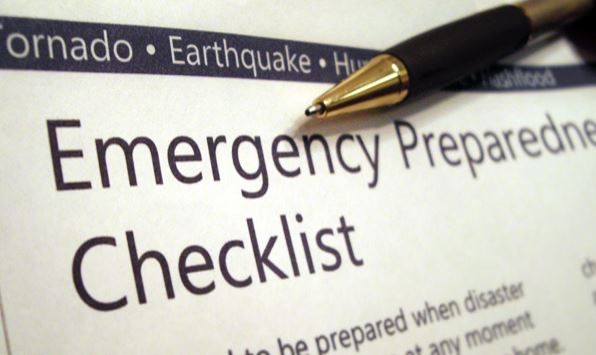
As a result of the interest expressed following our article on earthquake preparation last week, I asked my friend and former business colleague, Don MacSparran, to provide us with the next installment on the topic of leadership in preparedness.
Don retired from the Washington State Emergency Management Division as the Homeland Security Section Manager in 2010. Prior to that he served in leadership positions within adult education for 15 years after serving 25 years in the US Air Force. His military career included command of a tactical air control unit in Europe, with deployments to Saudi Arabia, the Netherlands, and Germany. He has also served on the Board of Directors and Supervisory Committees of several credit unions. He continues his involvement in emergency management as a disaster reservist for Washington State and as a volunteer liaison officer with the Pierce County Department of Emergency Management.
Leadership and Emergency Preparedness
- By Major Don MacSparran, USAF (Ret.)
Last week’s message on emergency preparedness by Jeremy Stilwell stirred strong feelings about the responsibilities of today’s leaders to understand their role in emergency management. From frozen pipes in the basement to a catastrophic earthquake, waiting to start thinking response and recovery until the lights go out makes a leader part of the problem, not the solution.
Remember the ‘vision’ part of leadership? Well, that involves emergency preparedness. Don’t trust yourself to identify all the possible internal and external disasters which could impact your organization? Involve your team, check-in with the experts, contact your state, county, or city emergency management folks—they may surprise you with their resources and insight. Collaboration! Working together now - makes it much easier when the lights do go out!
Identifying potential disasters may be the easy part, but will never be complete (think meteor through the roof…just kidding…). Actually, it’s much easier to simply focus on the conditions that may impact your business or home: loss of utilities, degraded or loss of communications, transportation challenges, employee wellbeing and/or stress, backup systems, loss of key personnel or family members, etc. What happens when the ATMs, cell towers, and gas stations have no power for a week – or more?
All of us need a plan to mitigate the impact on our business, as well as our family; that means response and recovery. And it’s not just what we do, but also what others (internal and external) perceive us to be doing. With that in mind, here are some key priorities:
- Preparation: do what I can as a leader to mitigate the impact on people, property, and business (plan)
- Response: How can we ensure the safety of employees and customers, and
- Recovery: What do I need to do to ensure reasonable business survival
- Restoration: How do I plan for restoration in order to get everything and everyone back to life as it had been
Serious disasters bring first responders, but that response may not come for several days - or longer - in a catastrophic event (think – and plan - in terms of bridges and main highways becoming impassable for some period).
In my last job we had individual emergency kits for every employee which included emergency rations, water, a flashlight, a whistle, gloves, etc. What does your business and environment dictate? What do your employees need from you to both take care of their families and get to work?
Once everyone is safely out of an unstable building, it becomes time to shift to recovery. You want your business to survive, your employees want to keep their jobs, and your customers want your products/services (not to mention that all levels of government really need your tax payments!). Without a plan and basic preparation, we can easily become part of the problem. Therefore as leaders we must know what we can do, can’t do, what we need, and what we can contribute. We must hold ourselves, our employees, and our public agencies accountable for each person’s role. We must not forget that government cannot and will not be the sole source of relief.
Finally, it is important for those of us in leadership to be a cheerleader for emergency preparedness. If those in your business/organization are prepared at home for emergencies/disasters, they’ll be able to commit energy to your business much sooner. If the business next door is prepared, it just may be easier to recover with a bit of collaboration. If your customers are prepared, they’ll be able to spend money sooner. If your local government is prepared, you’ll be able to get that permit a bit sooner.
Leadership is about vision, commitment, communication, and action. Don’t wait—the fate of your business, your employees, your customers, your community are depending on you.
